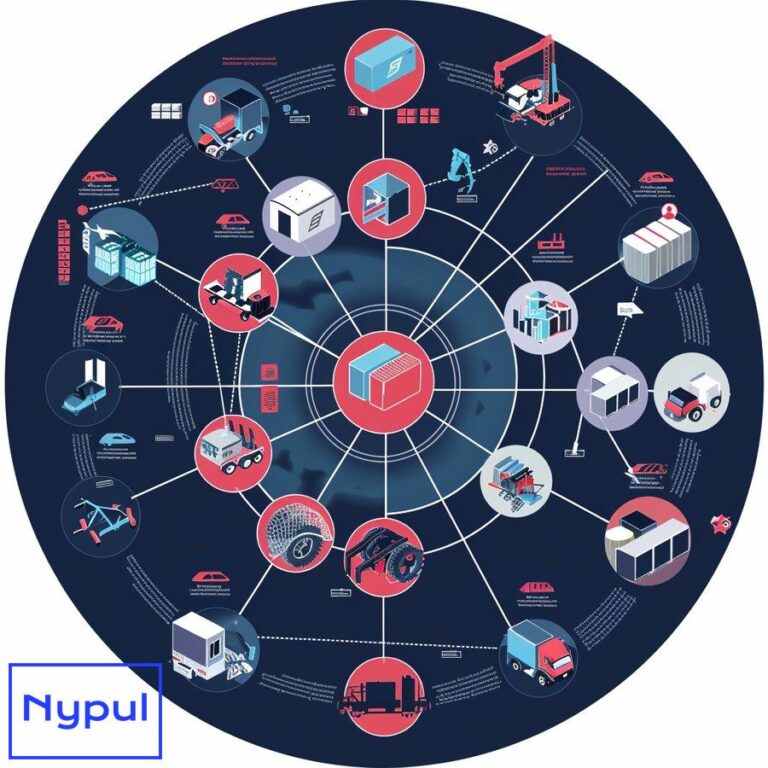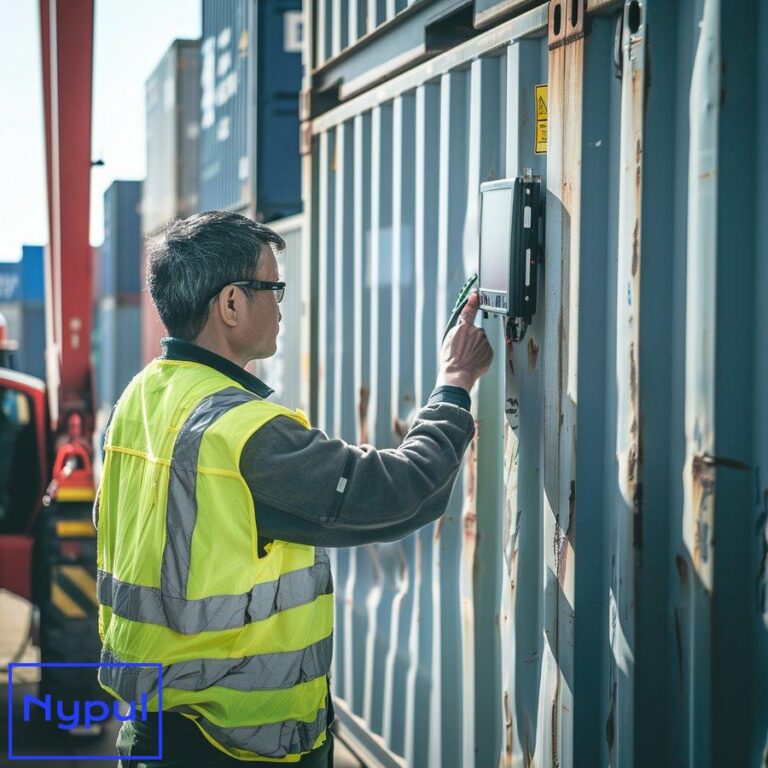How Technology Can Solve Last Mile Delivery
What is the last mile delivery challenge?
The last mile delivery challenge refers to the complexities and inefficiencies associated with the final leg of the delivery process, where goods are transported from a distribution center to the end consumer. This segment of the supply chain is often the most costly and time-consuming, accounting for a significant portion of total delivery expenses.

Factors contributing to the last mile delivery challenge include:
-
Urban congestion: Traffic congestion in metropolitan areas leads to delays, increasing delivery times and costs. The unpredictable nature of urban traffic can disrupt planned routes, causing inefficiencies.
-
Consumer expectations: With the rise of e-commerce, consumers now expect faster delivery times, often within hours of placing an order. Meeting these expectations can strain logistics operations and resources.
-
Diverse delivery locations: Delivering to various locations, including residential areas, businesses, and remote locations, requires flexible logistics solutions. Each location presents unique challenges, from accessibility to parking restrictions.
-
Cost pressures: As delivery expectations rise, so do costs. Companies must balance the need for speed with the necessity of maintaining profitability, often leading to difficult trade-offs.
-
Returns management: The increase in online shopping has led to a higher volume of returns. Efficiently managing returns adds another layer of complexity to last mile logistics.
The last mile delivery challenge is not just a logistical issue; it impacts customer satisfaction and brand loyalty. Companies that can effectively navigate these challenges will gain a competitive edge in the rapidly evolving e-commerce landscape.
How does AI optimize delivery routes?

Artificial Intelligence (AI) plays a transformative role in optimizing delivery routes, significantly enhancing efficiency and reducing costs. By analyzing vast amounts of data, AI algorithms can identify the most efficient paths for delivery vehicles, taking into account various factors.
AI optimizes delivery routes through the following mechanisms:
-
Data analysis: AI systems analyze historical delivery data, traffic patterns, and weather conditions to predict the best routes. This analysis allows for real-time adjustments based on current conditions.
-
Dynamic routing: AI enables dynamic routing, allowing delivery vehicles to change their routes on-the-fly. If a traffic jam or accident occurs, the system can quickly reroute drivers to avoid delays.
-
Predictive modeling: AI uses predictive modeling to forecast delivery times and potential obstacles. This foresight allows logistics companies to proactively manage resources and improve delivery accuracy.
-
Machine learning: Machine learning algorithms continuously improve route optimization by learning from past deliveries. Over time, these systems become more adept at predicting the most efficient routes based on evolving patterns.
The integration of AI in route optimization not only enhances operational efficiency but also leads to improved customer satisfaction. Faster, more reliable deliveries contribute to a positive customer experience, fostering loyalty and repeat business.
How can real-time tracking improve customer experience?
Real-time tracking has revolutionized the way consumers interact with delivery services. By providing transparency and visibility throughout the delivery process, companies can significantly enhance the customer experience.
The benefits of real-time tracking include:
-
Increased transparency: Customers can monitor their deliveries in real-time, reducing uncertainty and anxiety. Knowing exactly when to expect a package allows consumers to plan their day accordingly.
-
Improved communication: Real-time tracking facilitates better communication between logistics providers and customers. Automated updates on delivery status can be sent via SMS or app notifications, keeping customers informed.
-
Enhanced trust: Providing real-time tracking builds trust between consumers and delivery services. Customers appreciate being able to see the progress of their deliveries, which fosters a sense of reliability.
-
Reduced missed deliveries: With real-time tracking, customers can adjust their schedules based on delivery updates. This flexibility reduces the likelihood of missed deliveries, which can lead to additional costs and customer frustration.
-
Feedback opportunities: Real-time tracking systems often include options for customers to provide feedback on their delivery experience. This feedback can be invaluable for logistics companies seeking to improve their services.
By leveraging real-time tracking technology, logistics companies can create a more customer-centric delivery experience. This not only enhances satisfaction but also encourages brand loyalty and repeat business.
What role do autonomous vehicles play in last mile delivery?
Autonomous vehicles (AVs) are emerging as a promising solution for addressing the last mile delivery challenge. These self-driving vehicles offer several advantages that can streamline the delivery process and reduce costs.
The role of autonomous vehicles in last mile delivery includes:

-
Cost reduction: AVs can significantly lower labor costs associated with delivery. With no need for a human driver, companies can allocate resources more efficiently.
-
Increased efficiency: Autonomous vehicles can operate around the clock, reducing delivery times and increasing the number of deliveries made in a given timeframe. This capability is particularly beneficial for high-demand areas.
-
Improved safety: AVs are equipped with advanced sensors and algorithms that enhance safety during operation. This technology can reduce the likelihood of accidents, benefiting both delivery personnel and the general public.
-
Environmental benefits: Many autonomous vehicles are designed to be electric, contributing to reduced emissions and a smaller carbon footprint. This aligns with the growing demand for sustainable logistics solutions.
-
Scalability: As demand for last mile delivery continues to rise, AVs provide a scalable solution. Companies can deploy fleets of autonomous vehicles to meet increasing delivery volumes without the need for extensive hiring.
While the widespread adoption of autonomous vehicles in last mile delivery is still in its infancy, the potential benefits are significant. As technology advances and regulatory frameworks evolve, AVs are likely to play an increasingly important role in the logistics landscape.
How do smart lockers and access points solve delivery issues?
Smart lockers and access points are innovative solutions designed to address common last mile delivery challenges. These systems provide secure, convenient locations for package drop-off and pick-up, enhancing the overall delivery experience.
The advantages of smart lockers and access points include:
-
Enhanced security: Smart lockers provide a secure location for package delivery, reducing the risk of theft or damage. Customers can retrieve their packages at their convenience, ensuring peace of mind.
-
Increased convenience: Access points, such as locker systems located in retail stores or public spaces, offer customers flexibility in choosing where and when to pick up their packages. This convenience can improve customer satisfaction.
-
Reduced delivery costs: By utilizing smart lockers, logistics companies can minimize the number of failed delivery attempts. This reduction in missed deliveries leads to lower operational costs and improved efficiency.
-
Streamlined returns: Smart lockers can also facilitate returns, allowing customers to drop off items securely without needing to coordinate with a delivery driver. This feature simplifies the returns process for both consumers and logistics providers.
-
Data collection: Smart locker systems can collect valuable data on customer preferences and behaviors. This information can inform future logistics strategies and improve service offerings.
Smart lockers and access points represent a forward-thinking approach to solving last mile delivery issues. By enhancing security and convenience, these solutions contribute to a more efficient and customer-friendly logistics experience.
How does predictive analytics enhance last mile efficiency?
Predictive analytics is a powerful tool that enables logistics companies to anticipate and respond to various challenges in last mile delivery. By leveraging historical data and advanced algorithms, predictive analytics can significantly enhance operational efficiency.
The benefits of predictive analytics in last mile logistics include:
-
Demand forecasting: Predictive analytics allows companies to forecast demand patterns based on historical data. This capability enables better resource allocation and planning, ensuring that logistics operations can meet customer needs.
-
Optimized inventory management: By predicting demand, companies can optimize inventory levels at distribution centers. This optimization reduces excess inventory and minimizes stockouts, leading to more efficient operations.
-
Enhanced route planning: Predictive analytics can inform route planning by identifying potential delays and obstacles. This foresight allows logistics providers to proactively adjust routes, improving delivery times.
-
Customer behavior insights: Analyzing customer data can reveal trends in purchasing behavior, allowing companies to tailor their delivery services to meet specific customer preferences. This personalization enhances the overall customer experience.
-
Operational efficiency: Predictive analytics can identify inefficiencies in logistics operations, enabling companies to implement targeted improvements. This continuous optimization leads to cost savings and improved service levels.
The integration of predictive analytics into last mile logistics represents a significant advancement in operational capabilities. By harnessing data-driven insights, logistics companies can enhance efficiency, reduce costs, and improve customer satisfaction.
What mobile technologies are revolutionizing customer communication in delivery?
Mobile technologies are transforming the way logistics companies communicate with customers throughout the delivery process. These advancements facilitate real-time interactions and enhance the overall customer experience.
Key mobile technologies impacting customer communication include:
-
Mobile applications: Dedicated mobile apps allow customers to track their deliveries, receive updates, and communicate directly with logistics providers. These apps enhance transparency and streamline communication.
-
SMS notifications: Text message notifications provide customers with timely updates on their delivery status. This direct communication channel ensures that customers are informed without needing to check an app.
-
Chatbots and AI-driven support: Many logistics companies are implementing chatbots to handle customer inquiries. These AI-driven systems can provide instant responses to common questions, improving customer service efficiency.
-
Location sharing: Some delivery services offer location sharing features, allowing customers to see the real-time location of their delivery driver. This transparency can alleviate concerns and enhance trust in the delivery process.
-
Feedback mechanisms: Mobile technologies enable customers to provide feedback on their delivery experience easily. This feedback can be invaluable for logistics companies seeking to improve their services.
The integration of mobile technologies into customer communication represents a significant shift in how logistics companies interact with consumers. By leveraging these tools, companies can create a more engaging and responsive delivery experience.
Blockchain in Last Mile Logistics
Blockchain technology is gaining traction in the logistics industry, offering innovative solutions to enhance transparency, security, and efficiency in last mile delivery. By providing a decentralized and immutable ledger, blockchain can address several challenges faced by logistics providers.

The potential benefits of blockchain in last mile logistics include:
-
Enhanced transparency: Blockchain allows all parties involved in the delivery process to access real-time data on package status and location. This transparency fosters trust among stakeholders and reduces disputes.
-
Improved security: The decentralized nature of blockchain technology enhances security by protecting data from tampering and fraud. This security is particularly important in high-value shipments.
-
Streamlined processes: Blockchain can automate various logistics processes through smart contracts, which execute automatically when predefined conditions are met. This automation reduces administrative burdens and speeds up transactions.
-
Traceability: Blockchain provides a comprehensive audit trail of each package’s journey, enabling logistics companies to trace items back to their origin. This traceability is crucial for compliance and quality assurance.
-
Cost reduction: By improving efficiency and reducing fraud, blockchain technology can lead to significant cost savings for logistics companies. These savings can be passed on to consumers, enhancing competitiveness.
The adoption of blockchain technology in last mile logistics is still in its early stages, but its potential to revolutionize the industry is significant. As more companies explore blockchain solutions, the logistics landscape is likely to evolve, leading to improved efficiency and customer satisfaction.
In conclusion, technology is playing a pivotal role in addressing the challenges of last mile delivery. From AI and real-time tracking to autonomous vehicles and blockchain, these innovations are transforming logistics operations and enhancing the customer experience. Companies that embrace these technologies will be better positioned to meet the demands of the modern consumer and thrive in an increasingly competitive marketplace.




